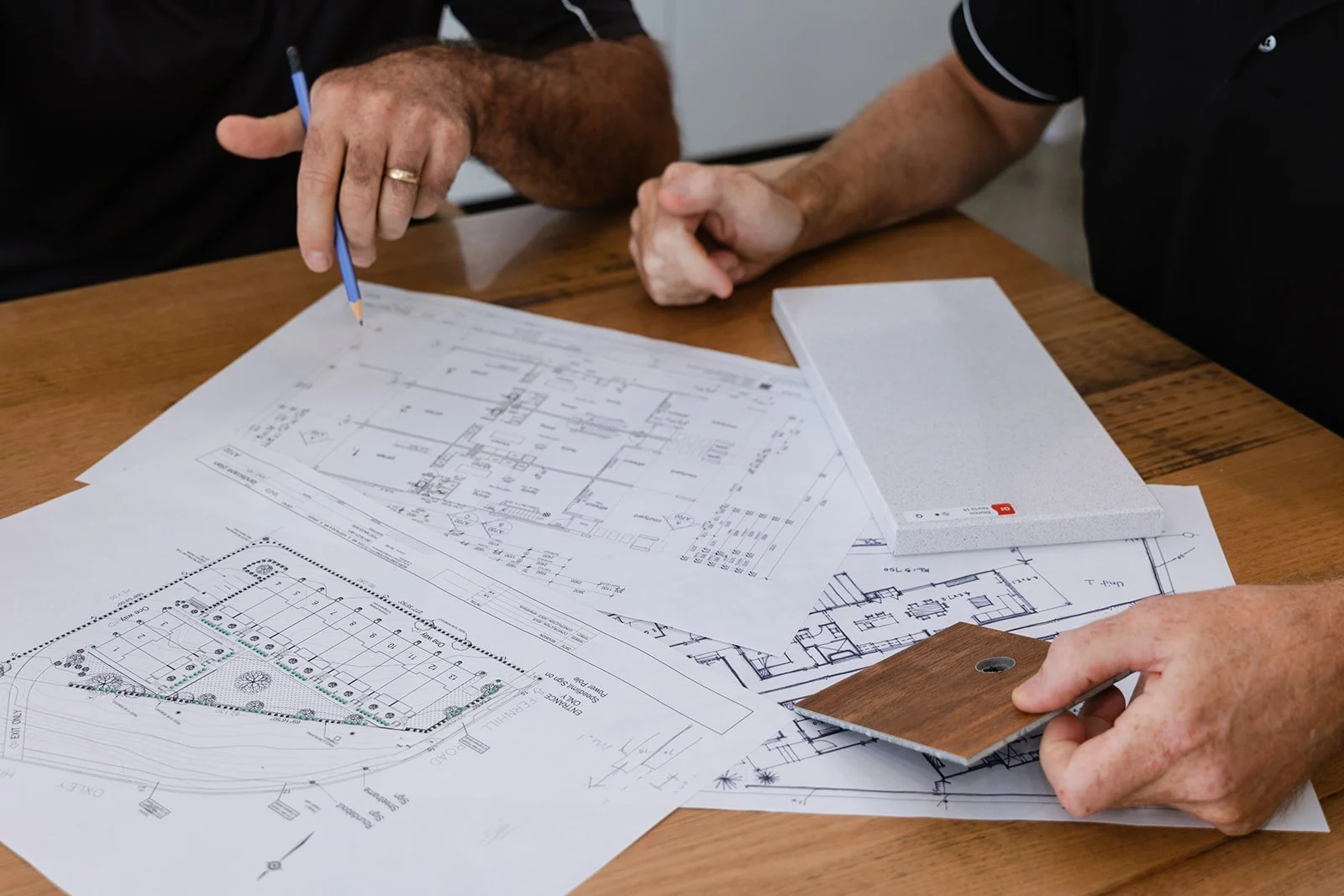Why Cheap Isn’t Always Best: What to Consider Before Cutting Corners
When you’re planning a home build, whether it’s your forever home or an investment property, it’s tempting to lean towards the cheapest option.
After all, lower cost means more savings now, right? Maybe. But here at Morr Homes & Projects, we’ve seen time and again how “cheap” choices up front often cost more in the long run…
Here are some of the common “cheap traps” clients fall into, and why going a bit higher now usually pays off later.
1. The Block: Cheap Land Can Cost You More
We all want good land at a reasonable price. But very cheap blocks can often come with risks:
Site difficulties: Blocks with steep slopes, unstable soil, or bushfire/erosion risk may seem inexpensive - until you factor in the extra site works needed: retaining walls, earthworks, driveways, drainage, or even soil remediation. These can quickly blow your budget.
Orientation and aspect: Blocks that aren’t suited to good solar orientation or views may force compromises in design (e.g. sacrificing natural light) or result in higher energy bills. A “good block” is more than just cheap - it needs to match your lifestyle and future living conditions.
Services & infrastructure: Cheap land in undeveloped areas often lacks essential services (water, sewer, power, internet). Extending or bringing in utilities might cost more per metre than you think - and might delay the build.
Resale or capital growth: Location, views, proximity to amenities, elevation, and flood risk matter. A cheaper block in a less desirable location might mean you’re locking in lower capital growth.
2. Cheap Builder = Cheap Outcomes
Builders who under-quote or cut corners may seem like great value, but:
Quality vs cost trade-offs: Builders who offer the lowest price may use lower-quality materials, subcontractors who don’t specialise, or take shortcuts in workmanship. What looks okay at handover can show issues after the first heavy rain, in the second winter, or when maintenance pops up.
Hidden costs and change orders: If a low quote excludes things that most consider standard - like drainage, siteworks, permit costs, landscaping, or finishing fixtures - you’ll end up paying more later or making frustrating compromises.
Delay risks: Inexperienced builders or those overstretched may struggle with scheduling, securing permits, meeting council/public authority requirements, or managing subcontractors. Delays cost money - in temporary accommodation, finance, materials etc.
Warranty, after-care, defects: A low price doesn’t always come with good support if something goes wrong. A builder’s reputation, track record, and after-sales care matter a lot.
3. Materials & Finishes: Short-Term Savings, Long-Term Costs
Durability over appearance: A budget countertop might look fine initially, but it may stain, chip, or fade easily. Investing in better quality where wear and tear is highest (floors, splashbacks, windows) means fewer replacements or repairs.
Energy efficiency: Cheapest windows, insulation, HVAC etc. might save you on upfront costs but cost you in running, heating/cooling, comfort (hot summers, cold winters). Energy efficient design and materials have returns in lower bills and better resale.
Warranty / manufacturer support: Cheaper materials may come with limited or no warranty. If something fails, replacement may be costly and difficult.
4. Design & Planning: The Hidden ROI
Design that suits you and the site: Paying a little more for design that maximises natural light, ventilation, flow, usability (storage, layouts etc.) can make your home more liveable, reduce utility bills, and increase resale value.
Future proofing: Thinking ahead - elder-friendly, adaptability, sustainability, changing lifestyle needs - can avoid expensive renovations later.
Council & regulatory compliance: Cutting costs by ignoring or underestimating regulatory or council-requirements (setbacks, bushfire zones, flood zones etc.) can lead to fines, redesigns, or even having to undo work.
5. Getting Value, Not Just Cheap
So what does “good value” look like, compared to simply cheap? Here are some markers:
Transparent, itemised quotes
Builder/subcontractor references, examples of past work
Quality material samples and clear specifications
Appropriate guarantees/warranties
Efficient and logical design that suits your site and lifestyle
Working with people who understand the local conditions (soil, climate, council rules etc.)
Final Word: Cheap Can Cost More Than You Think
Sometimes, the cheapest option may be “good enough” - if you have very simple needs, plan for short-term use, or are comfortable doing maintenance or upgrades. But for most homeowners and investors, going slightly above the lowest cost usually gives better peace of mind, fewer surprises, stronger value over time, and a home that performs well - not just now, but for years to come.
At Morr Homes & Projects, we believe in helping you find the balance: fair cost + lasting quality + homes that perform. Because building smart isn’t just about the price tag - it's about the roof over your head 10, 20, or 30 years down the line feeling just as good as the day you moved in.





